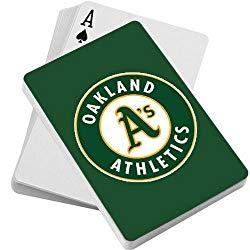Library of Congress
Some consider Lefty Grove to be baseball’s greatest pitcher of all time — or, at the very least, the greatest left-handed pitcher of all time.
Robert Moses Grove was born to John and Emma Grove on Tuesday, March 6, 1900 in Lonaconing, Maryland. Following in the footsteps of his father and older brothers, Grove initially began a career working in the mines. He quit after two weeks, however, declaring, “Dad, I didn’t put that coal in here, and I hope I don’t have to take no more of her out.” From there, he drifted between other forms of work, including a “bobbin boy” working spinning spools to make silk thread, as an apprentice glass blower and needle etcher in a glass factory, and as a railroad worker laying rails and driving spikes.
When he was not working, Grove played a version of baseball using cork stoppers in wool socks wrapped in black tape as a ball, and fence pickets when bats were not available. He did not play an actual game of baseball until the age of seventeen, nor did he play organized baseball until nineteen when Dick Stakem, the proprietor of a general store in a neighboring town, recruited him to play in town games on a field located between a forest and train tracks.
Grove put on such a good performance as a pitcher, the manager of the B&O railroad wanted the teenager on his team, and hired him to clean cylinder heads of steam engines in Cumberland, Maryland. Grover never got the opportunity to play baseball with B&O, however. A local garage manager named Bill Louden also happened to manage the Martinsburg, West Virginia team of the Class D Blue Ridge League and offered Grove an astonishing $125 a month, a sum $50 more than his father and brothers were making.
Grove took a 30-day leave from his job, going 3-3 with 60 strikeouts in 59 innings for the Martinsburg team. Word of Grove’s performance reached Jack Dunn, owner of the International League (Double-A) Baltimore Orioles, and Dunn proceeded to buy Grove for a price somewhere between $3,000 and $3,500 from Louden.
Grove won his debut, 9-3, over Jersey City, prompting Dunn to say he wouldn’t sell Lefty to anyone for $10,000. From 1920-24, Grove was 108-36 and struck out 1,108 batters for a minor-league record. Grove was often wild as well, however, and went 3-8 in the postseason. His final season in Baltimore, however, he went 26-6, struck out 231 batters in 236 innings, and reduced his walks from 186 to 108. Following the 1924 season, Dunn sold Grove to Philadelphia owner and manager Connie Mack, for $100,600. The extra $600 supposedly made it a higher price than the Yankees had paid the Red Sox for Babe Ruth after the 1919 season.
Grove was twenty-five years old when he broke into the big leagues on April 14, 1925 with the Philadelphia Athletics. He had a rough rookie season, going 10-12 and leading the American League in both walks (131) and strikeouts (116). “Catching him was like catching bullets from a rifleman with bad aim,” Athletics catcher Mickey Cochrane commented years later.
In 1926, Grove’s ERA dropped from it’s previous 4.75 to a league-leading 2.51, his walks dropped from 131 to 101, and his strikeouts increased from 116 to 194. However, Grove also didn’t receive much support, and he was shut out four times in the season’s first two months. He would finish the season with a 13-13 record.
His bad fortune would not last forever, though. Grove led the league in strikeouts the next five years and won twenty or more games for the next seven. In 1929, the A’s won the pennant. Connie Mack declined to start either Grove or Rube Walberg, another left-handed pitcher, in the World Series, but Grove made his mark in relief. Coming into Game Two in the fifth inning, he recorded six strikeouts, three hits, one walk and no runs allowed over 4 1/3 innings. Grove then pitched the last two innings of Game Four in relief as well. The A’s took the Series, four games to one over the Cubs, and Grove struck out ten batters in 6 1/3 innings.
In 1930, A’s went 102-52 to finish in first place, and Grove won the Triple Crown of pitching by leading the league in wins (28), strikeouts (209), and ERA (2.54). In the World Series, the A’s faced the St. Louis Cardinals, who had batted .314 as a team for the season. Grove won the opener, 5-2, throwing seventy strikes and a mere thirty-nine balls, striking out five and allowing nine hits. Grove then relieved George Earnshaw in the eighth inning of a scoreless Game Five and won it, 2-0, with the help of Jimmie Foxx’s two-run homer.
Grove finished the 1931 season 31-4 with an ERA of 2.06. He won his second straight Triple Crown with 175 strikeouts and was named the American League’s Most Valuable Player. The Athletics won the pennant again, finishing 13 1/2 games ahead of second-place New York. With a blister on one of his throwing fingers, Grove gave up twelve hits in the World Series opener, but he received good fielding support and won, 6-2. However, Grove allowed eleven hits and four earned runs in eight innings during Game Three, losing 5-2. Grove then won Game Five, 8-1, on five hits and one walk. However, the A’s lost the Series in seven games to the Cardinals.
Grove had a 24-8 record in 1932 and led the league with a .750 percentage and 21 complete games. In 1933, he finished 24-8 with a 3.20 ERA — the first time since 1927 that he finished the season with an ERA above 3.0. Following the 1933 season, facing the financial realities that came with the Great Depression, Connie Mack traded Grove to the Boston Red Sox.
Unfortunately, Grove was unable to contribute much during his first year in Boston, as an arm injury held him to an 8-8 record. He bounced back in 1935, however, finishing 20-12 with a league-leading 2.70 ERA. In the 1936 season, he pitched a 2.81 ERA to win his seventh ERA title while posting a 17-12 record and 130 strike-outs. He then won his eighth ERA title a year later, finishing with a 17-9 record and 153 strike-outs. Grove then finished with records of 14-4 in 1938 and 15-4 in 1939, but in 1940, he had a 7-6 record while recording a 3.99 ERA with 62 strike-outs. The 1941 season would be his final season, and he finished 7-7, winning his 300th game on July 25th.
Grove finished with a career record of 300-141, and his .680 lifetime winning percentage is eighth all-time. He was elected to the National Baseball Hall of Fame in 1947, his first year of eligibility.
Lefty Grove died in Norwalk, Ohio, on May 22, 1975 at the age of seventy-five and was buried in the Frostburg Memorial Cemetery in Frostburg, Maryland.


